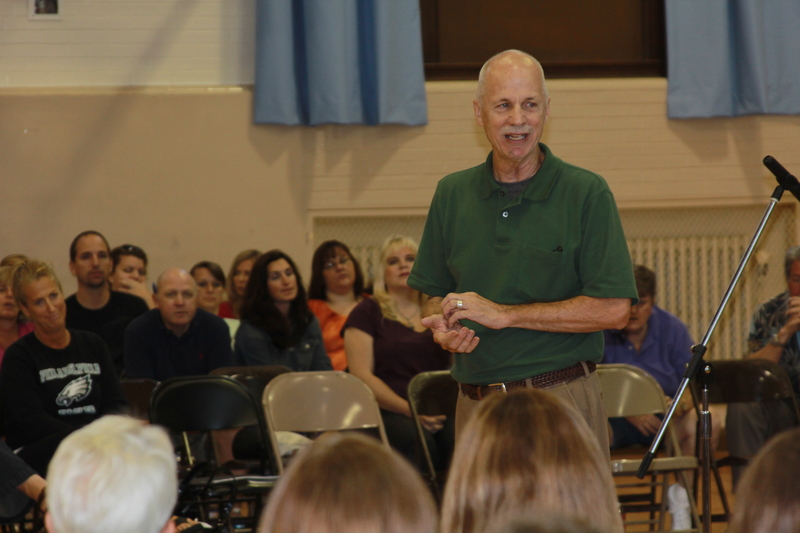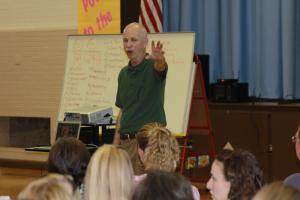Using gestures, specific commands and a lot of energy, teachers across the Cape district recently practiced a teaching tool to help keep their students engaged.
Whole Brain Teaching was developed to help teachers learn to grab students' attention and keep them focused on classroom lessons.
"This is a spin on what teachers have been doing for 100 years, but it's a new spin to get students more engaged and more interested," said Kevin B. Mumford, principal of Milton Elementary School.
About 150 elementary teachers from Cape and a few from outside the district attended a day-long training session recently at Milton Elementary led by Chris Biffle – a California professor who started the Whole Brain Teaching movement in 1999.
Biffle said classrooms are usually divided into three groups of students: those who will learn, those who won't learn yet and students who won't ever learn.
"Your job is to get those who will, to get going," he said.
With a voice that filled Milton Elementary's auditorium, Biffle demonstrated how teachers can use gestures and voice inflection to instruct their students and keep their attention.
His demonstration was punctuated with claps and responses before teachers paired off in groups of two to quickly explain to each other what had just been said.
"Are we all using gestures when we talk?" he questioned the group, as he walked along the aisles making sure everyone was participating.
The sound of a duck call and quick clap returned the audience's attention to Biffle, who said it's important for students to explain the lesson to each other so they fully understand what they are supposed to learn.
By pairing up students and then requiring them to take turns explaining, students who are good talkers learn how to listen and students who are better listeners practice speaking, Biffle said.
Even the simplest of classroom tasks can improve with the quick-fire response. Case in point: Getting kids to open their textbooks to the correct page or line up in class.
"You practice things with students when you don't want them to do it," Biffle said. "If you're practicing to line up when you want them to line up, it's too late."
Milton Elementary Kate Bowski helped bring the Whole Brain Teaching workshop to the school.
"I found the Whole Brain Teaching website a few years ago," she said.
Bowski's been using the techniques for about three years to teach her third-grade class.
Karen Warner, another third-grade teacher, has used the program for two years.
"I like it because it engages the students," she said.
Whole Brain Teaching material passed out during the Milton workshop explains how gestures and voice responses help activate the brain and stimulate the learning process. Audible class response helps activate the front of the brain to begin the learning process. Once activated, the front brain helps stimulate the rest of the brain for a total learning experience, documents said.
Mumford said the program ties in well with Learning Focus Strategies required by the state Department of Education.
"It's a great way to mix your personality with your love for teaching students," he said.
Melissa Steele is a staff writer covering the state Legislature, government and police. Her newspaper career spans more than 30 years and includes working for the Delaware State News, Burlington County Times, The News Journal, Dover Post and Milford Beacon before coming to the Cape Gazette in 2012. Her work has received numerous awards, most notably a Pulitzer Prize-adjudicated investigative piece, and a runner-up for the MDDC James S. Keat Freedom of Information Award.






















































